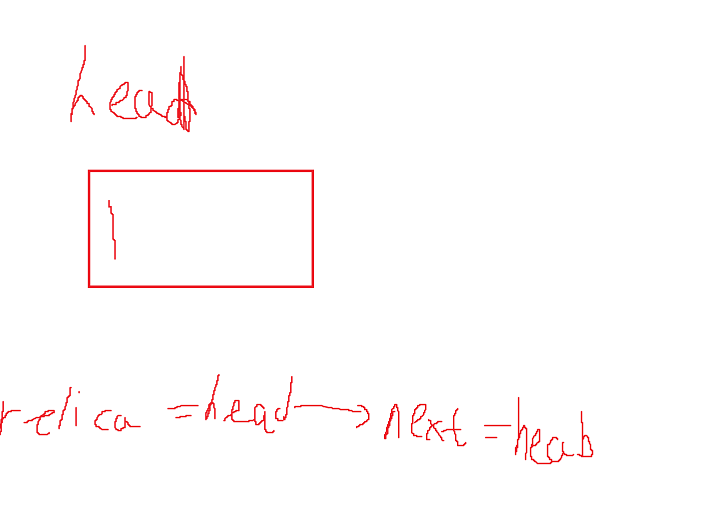catalogue
Three, end
I:
The linked list is divided into eight categories. This article describes the implementation of the two-way circular linked list of the leading node;
The physical structure of such linked list is shown in the figure below:
There are two pointers in each node, pointing to the previous node and the next node respectively;
When there is no content in the linked list, the header node is as follows:
 The advantage of the head node is that there is no need to consider special circumstances when inserting or deleting the first node;
The advantage of the head node is that there is no need to consider special circumstances when inserting or deleting the first node;
Compared with the single linked list, the advantage of the leading linked list is that there is no need to use the secondary pointer when deleting the head plug;
2, Implementation:
typedef struct LIST
{
struct LIST* prev;
struct LIST* next;
int data;
}LIST;
2. Initialization
In order to avoid using secondary pointers, function nesting is carried out; The initialization of the head node is completed
LIST* head = BuyHead();
LIST* BuyNode(int x)//Open up new nodes
{
LIST* newnode = (LIST*)malloc(sizeof(LIST));
if (newnode == NULL)
return NULL;
newnode->data = x;
newnode->next = NULL;
newnode->prev = NULL;
return newnode;
}
LIST* BuyHead()
{
LIST* head = BuyNode(0);
head->next = head;
head->prev = head;
return head;
}3. Head increase

As shown in the figure, adding a header is to add a node behind the header node and change the link of the original node;
void Hnode(LIST* phead,int x)//Head increase
{
assert(phead);
LIST* newnode = BuyNode(x);
newnode->next = phead->next;
phead->next->prev = newnode;
phead->next = newnode;
newnode->prev = phead;
}This function can ignore the link order of nodes; You don't have to care whether there are no elements in the linked list

When the linked list is empty, head - > next is equal to itself; Reflect the benefits of taking the lead in linked lists
4. Tail increase
void Wnode(LIST* phead, int x)//tail
{
LIST* newnode = BuyNode(x);
LIST* replica = phead->prev;
replica->next = newnode;
newnode->prev = replica;
newnode->next = phead;
phead->prev = newnode;
}5. Header deletion
void DenHnode(LIST* phead)//Header deletion
{
assert(phead);
assert(phead->next != phead);
LIST* replica = phead->next;
replica->next->prev = phead;
phead->next = replica->next;
free(replica);
replica = NULL;
}When deleting elements, you should consider whether the linked list is empty and whether the node is empty, and assert with assert;
6. Tail deletion
void DenWnode(LIST* phead)//Tail deletion
{
assert(phead);
assert(phead->prev != phead);
LIST* replica = phead->prev;
phead->prev = replica->prev;
replica->prev->next = phead;
free(replica);
replica = NULL;
}7. Find
LIST* SeekList(LIST* head, int x)//lookup
{
assert(head);
LIST* replica = head->next;
while (replica != head)
{
if (replica->data == x)
{
return replica;
}
replica = replica->next;
}
return NULL;
}8. Delete the specified element
void SpDen(LIST* cop)//Delete the specified element
{
LIST* prev = cop->prev;
LIST* next = cop->next;
prev->next = next;
next->prev = prev;
free(cop);
cop = NULL;
}9. Add element before cop
void SpAdd(LIST* cop,int x)
{
LIST* newnode = BuyNode(x);
LIST* replica = cop->prev;
replica->next = newnode;
newnode->prev = replica;
newnode->next = cop;
cop->prev = newnode;
}Think about 8 and 9. If you replace the cop with the first element or the last element, can you complete the head, tail deletion, head and tail addition;
The answer is yes,
Header deletion and addition; Replace cop with phead - > next,
Delete at the end, add: replace cop with phead - > prev;
10. Printing
void Print(LIST* phead)//Print
{
LIST* replica = phead->next;
while (replica != phead)
{
printf("%d ", replica->data);
replica = replica->next;
}
printf("\n");
}
Three,
Compared with the one-way linked list, the two-way linked list is much simpler. Although the structure is complex, the operation is simpler;
This article is over again. Imperfections can be pointed out or modified by yourself. Thank you